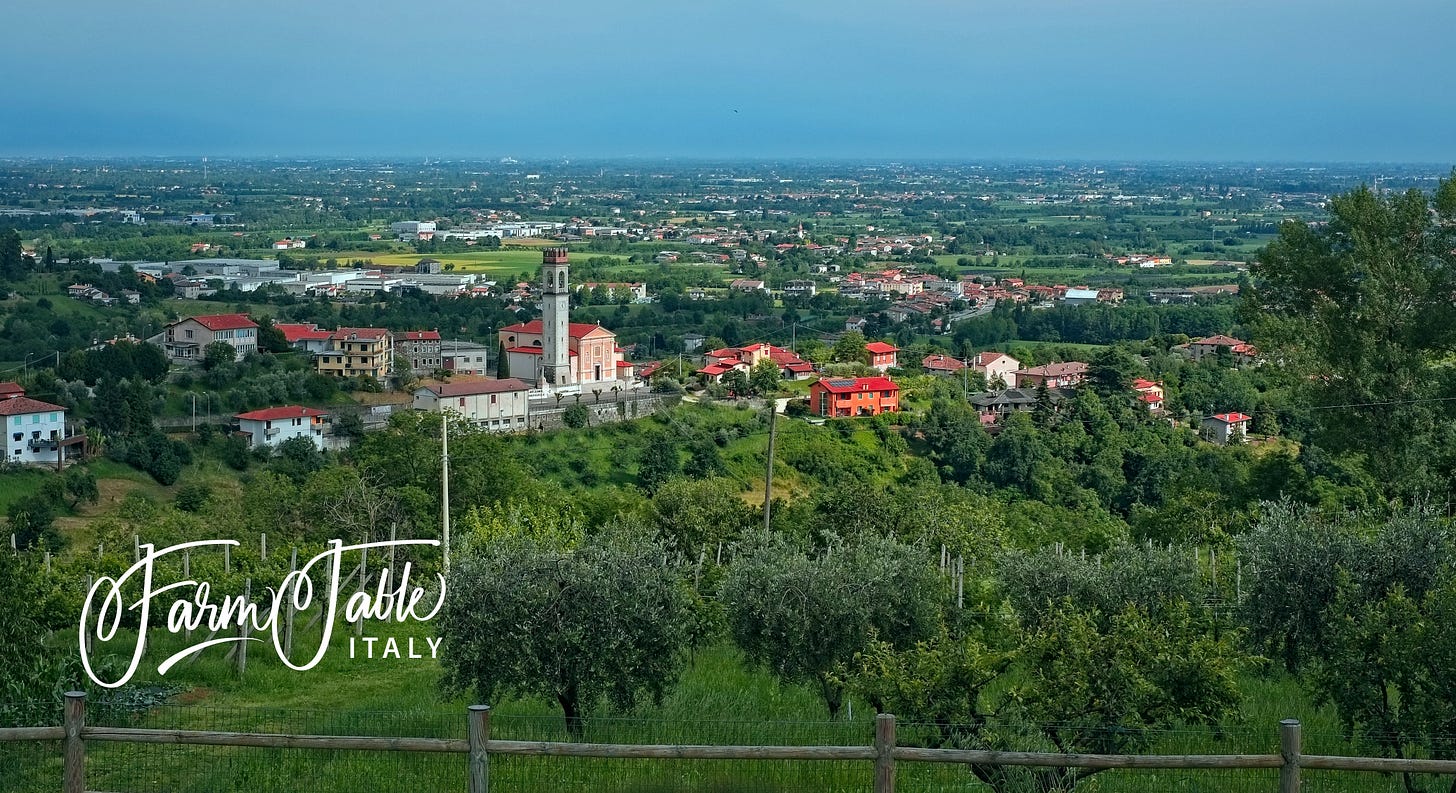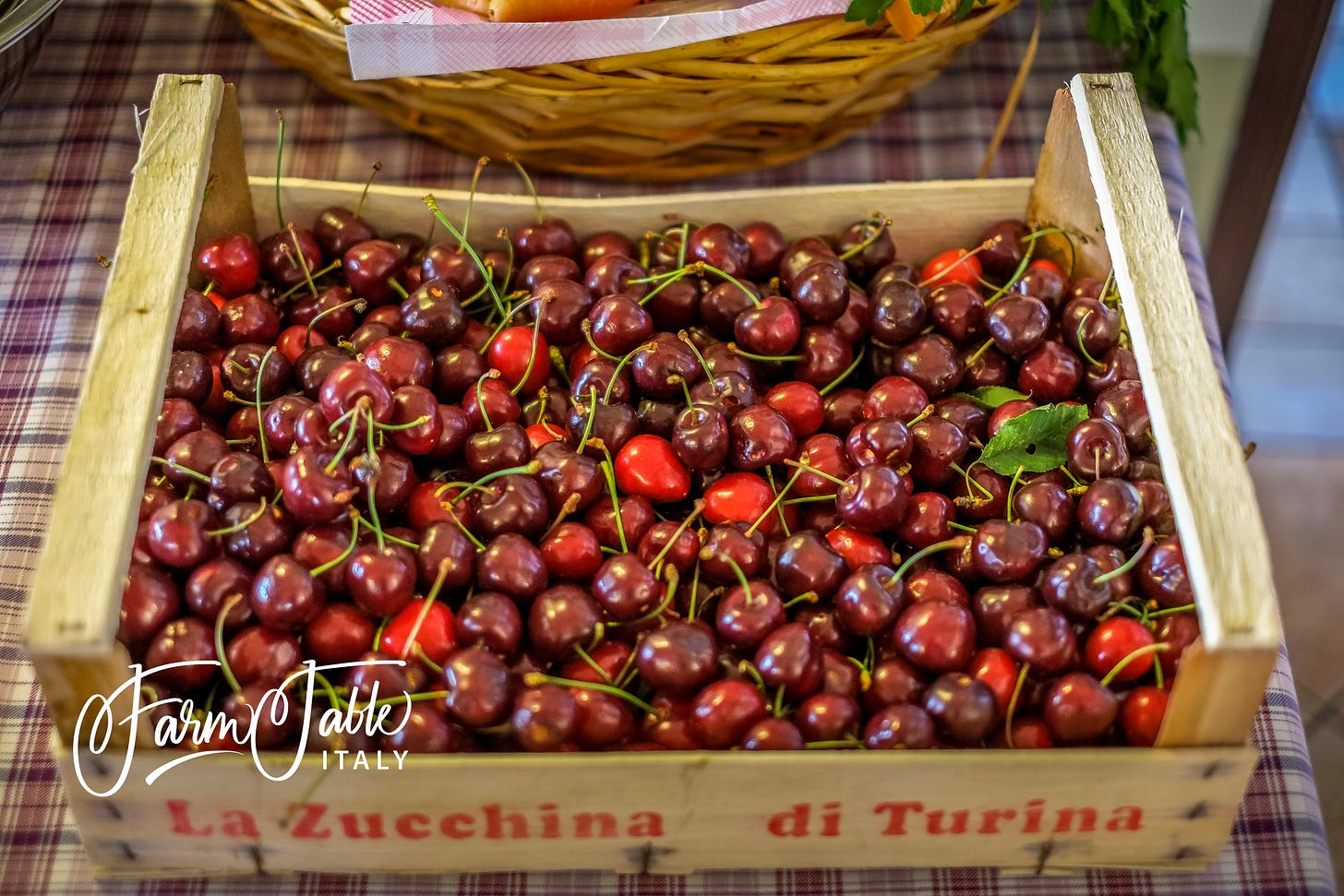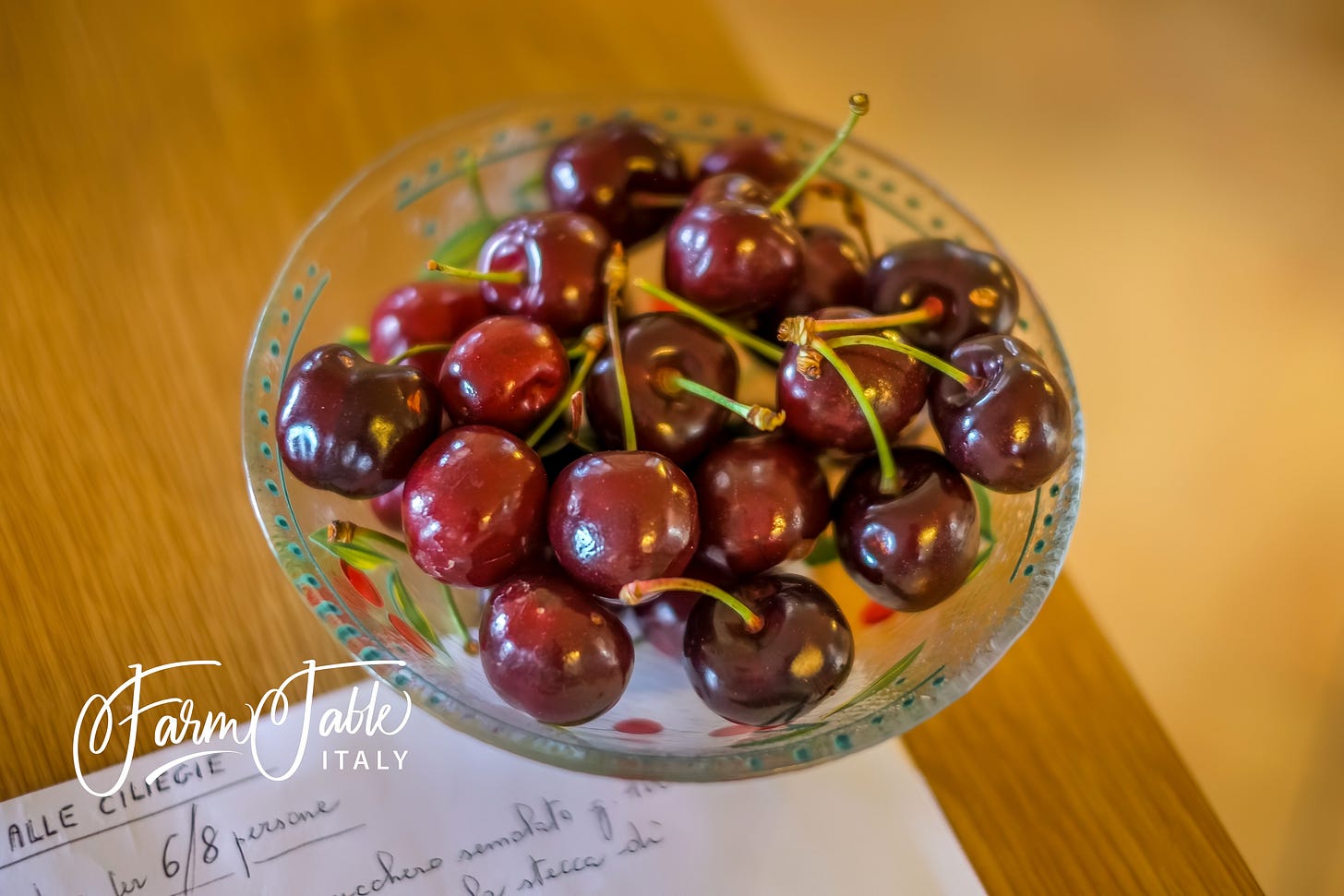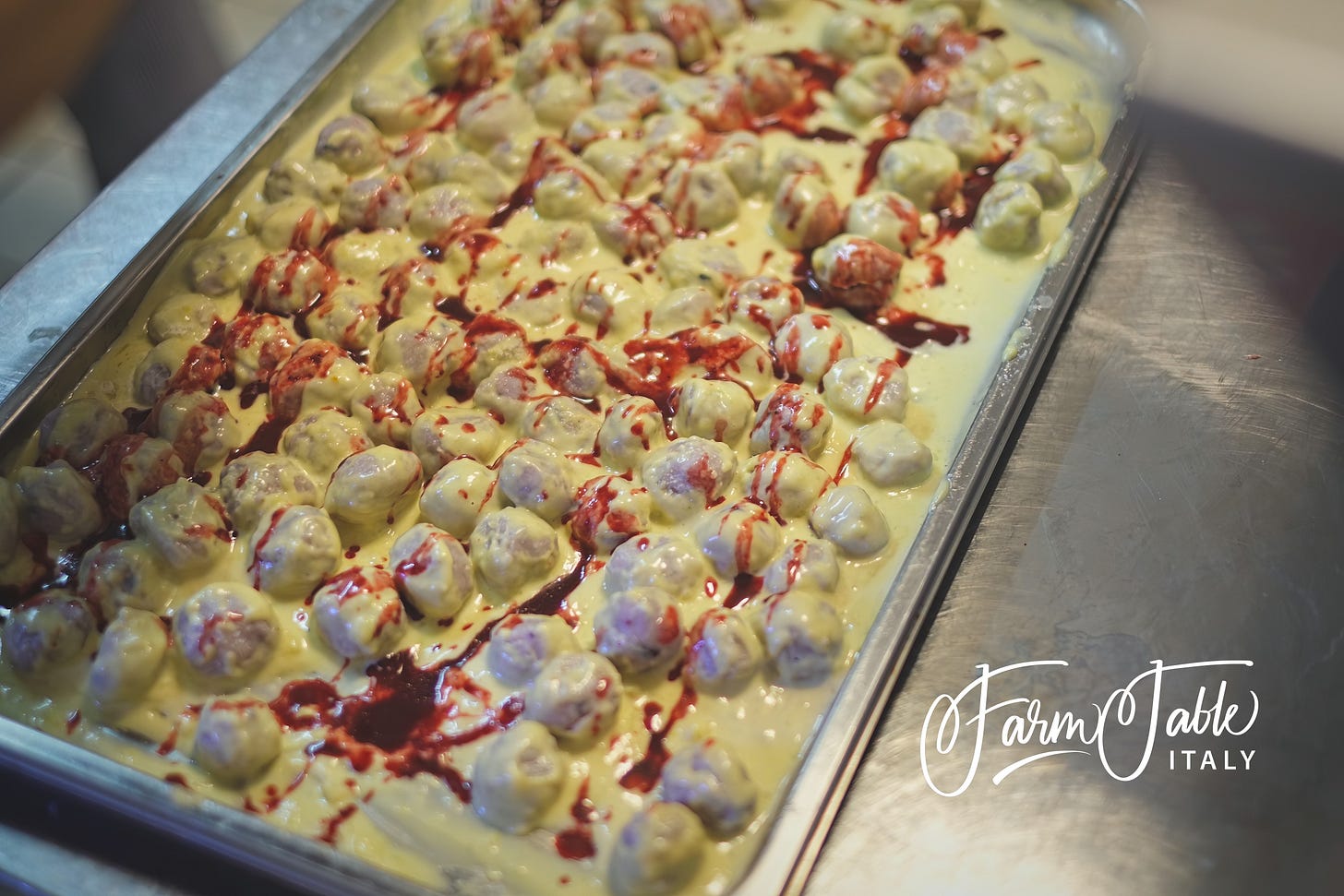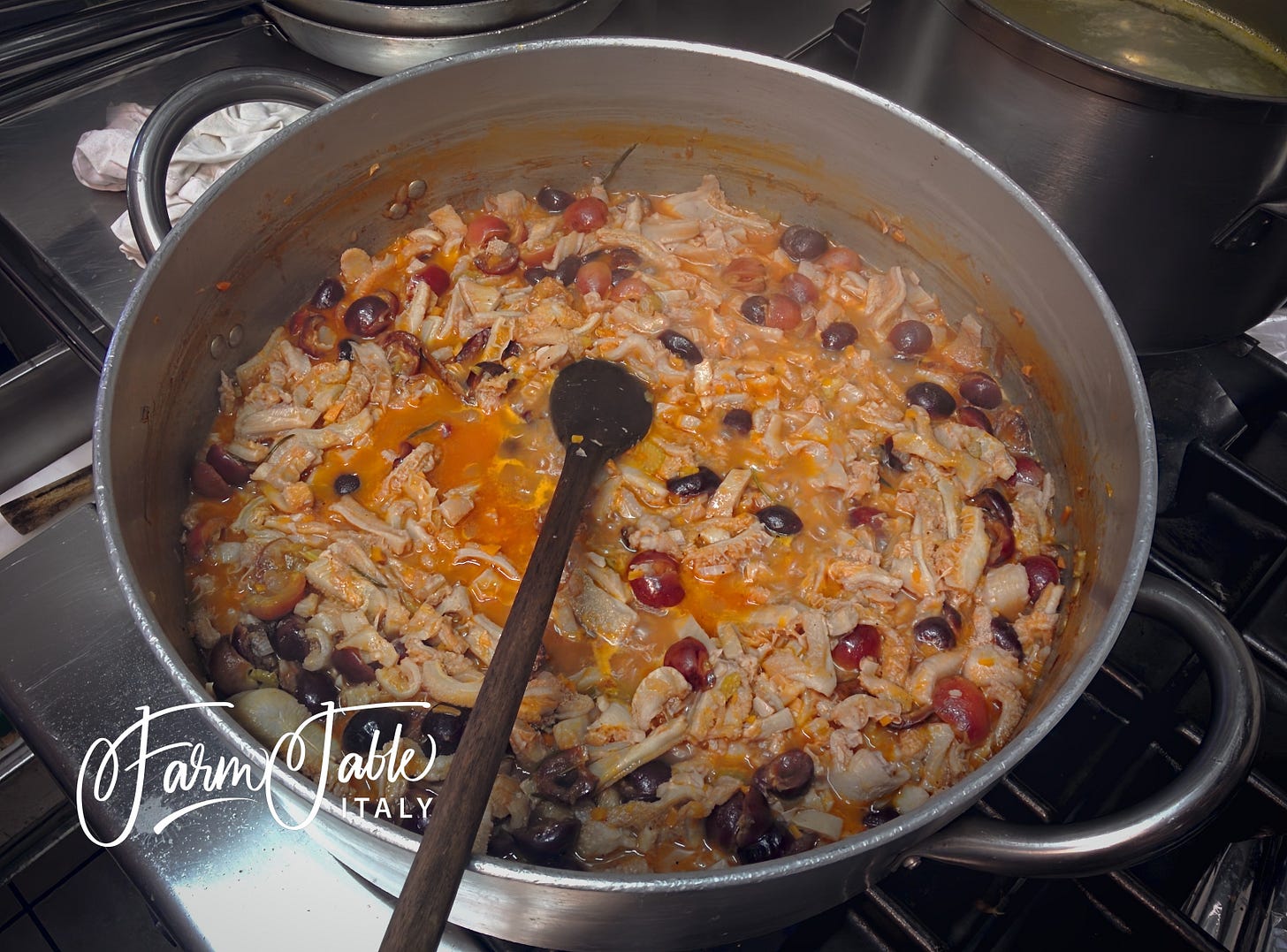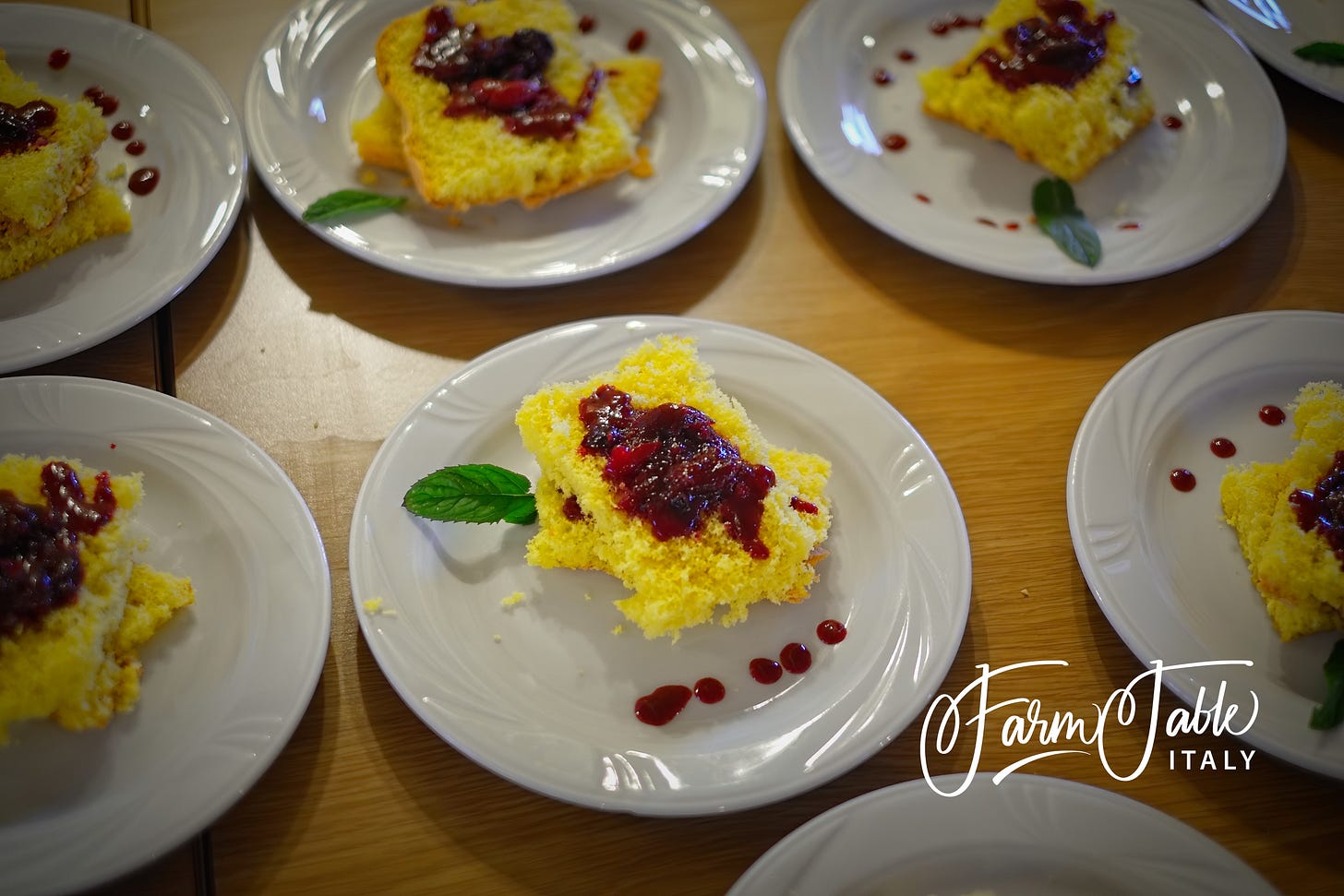Cooking School: Agriturismo Al Pozzetto (Molvena, VE)
Discover the mysteries of the Marostica cherry.
Florindo Caneva is a vivacious man with a head and face framed by crazy and curly dark hair. From the moment he strides out to greet you, it is clear he is passionate about impressing his guests at Agriturismo Al Pozzetto (Molvena, VE.) He radiates this passion with his hospitality, with the produce he grows, and the traditional Veneto meals they will soon become.
The town of Molvena, approximately 90km east of Venice, sits on some of Europe’s most fertile soil. The Po River runs between the Alps to the north and the Apennines to the south, slowly and slightly downhill toward the Adriatic. It irrigates the majority of the land along its banks, populated by vegetable farms that yield, among other things, the region’s famous rice and white asparagus. (For those who travel to Italy during the springtime, you will likely be familiar with the ubiquitous asparagi bianchi.)
As you climb into the prealpi venete — the foothills that mark the end of the Po River plains and that lead into the Alps — the scenery begins to change. The vegetable farms that begin in Emilia-Romagna become cherry orchards and vineyards that benefit from the cooler morning air as the elevation increases. In the fall, these fields will also grow radicchio, the red chicory lettuce known by the ancient Romans and used by modern-day Latino-Veneti peoples to mattress good cuts of meat. But today, on an early-summer evening, the cherry is the focus. Specifically, those varieties falling within the Marostica designation.
The cherry has a spellbinding hold on the people of this area and plays a central role in its agricultural history. Primarily grown in the valley between the Arista and Brenta rivers, the Marostica’s ties to the region date back 600 years. The nearby town of the same name hosts an annual festival celebrating the variety every June. Today, the Marostica cherry is protected by IGP certification, and competes with the Vignola, from nearby Modena in Emilia-Romagna) for bragging rights.
At the cooking school I attended at Agriturismo Al Pozzetto, Florindo and local Chef Amedeo Sandri divide the attendees into teams. They point around the room, dictating cooking assignments. The printed menus on the table are head-scratching. Nothing here about pies here. They’re talking about gnocchi? Sandwiches? And tripe? Scouring the ingredients around the 80-year-old chestnut table, we’re presented with flour, baking powder, cinnamon, cloves, eggs, vinegar, and is that saffron? Really? It seems Al Pozzetto’s own olive oil will play a role, and there, in a white ceramic bowl spilling over with Venetian irony, a pile of fruit: the blood-red Marostica cherries.
Our team was saddled with perhaps the most technically demanding recipe: the gnocchi di ricotta con crema di latte allo zafferano (gnocchi made from ricotta with saffron cream) and ciliegie all’aceto balsamico (cherries with balsamic vinegar). Traditional gnocchi are made with potatoes and eggs; but these substitute ricotta and Parmesan cheese and are much lighter ... and more fragile. Either way, gnocchi are a delicate dance. Consistency is everything, and if the timing or technique is off, the dumplings become little boulders. Or worse, mushy, formless blobs.
To begin, we stir fresh ricotta and flour together in a metal bowl, along with egg whites and Parmesan. Next, softened butter, cornstarch, and fresh cream. The mild ricotta and cream will act as a base against which the next ingredient — 300g of ciliegie denocciolata (pitted cherries) — will be able to shine. With a knife, we pit the cherries then chop them, then mix them by hand into the dough. The resulting paste is soft and sticky; held together by the eggs, Parmesan and cornstarch. The gnocchi are then plunged them into a huge vat of boiling water. Once they rise to the surface, we place them on a baking sheet.
Meanwhile, Florindo has disappeared and returned with another bowl of cherries picked from a grove of trees that are literally right beside the home, decades old, approximately 12 -15 feet tall. Three-quarters of the size of those found in a typical North American grocery store and loaded with character, they are almost the color of blackberries. Eaten raw, the flavor is complex and varied; sweet, for sure, but not overly so. Florindo doesn’t pick them by hand but rather uses pruning shears, just as you’d use in a vineyard. He hurries back to the kitchen where he quickly purées them in a blender, revealing both their delightful flavor as well as their deep purple color.
Back when we were rolling out the dough, Chef Amedeo had begun work on a simple cream-based sauce infused with saffron (zafferano) and balsamic vinegar (aceto balsamico), which he now pours onto the gnocchi. Florindo arrives with puréed cherry compote, and drizzles that, too, across the little “knots” before sliding the sheet into a large, well-used, steel oven for a quick, 15-minute bake. The final dish is light, sweet and richly flavored. The ricotta offers a clean palette against which the cherries splash their flavor, color, and texture. The saffron and balsamic vinegar sauce add richness and compliment the sweetness of the cherries.
While we were preparing gnocchi, the other guests busied themselves with a variety of other dishes that will feature the Marostica, including the most polarizing ingredient: tripe (or trippa in Italian.) Chef Amedeo sautéed the tripe with cherries and white wine slowly for what seemed like 30 - 40 minutes; the smell was intoxicating. Cooked correctly, tripe is not strong or gamey at all. In Italy, they use more than just the honeycomb-textured variety (called reticulum tripe) that we are accustomed to seeing in North America. Rather, all of the cow’s three stomachs are used depending on the meal. The so-called “first stomach” (called rumen tripe) is flat and smooth and that is the variety being sautéed by Chef Amedeo.
Choreographed by Florindo, the dishes are ready in the correct sequence. As we dip into the gnocchi, Chef Amedeo offers his thoughts on what this place is all about. He reflects on cooking as an act of love – both for our fellow human beings and for the land around us. We expand on long culinary traditions handed down through the generations, he says, and most importantly, we continue the tradition of nourishing one another. “Cooking for each other,” he says, “we learn about ourselves.”



